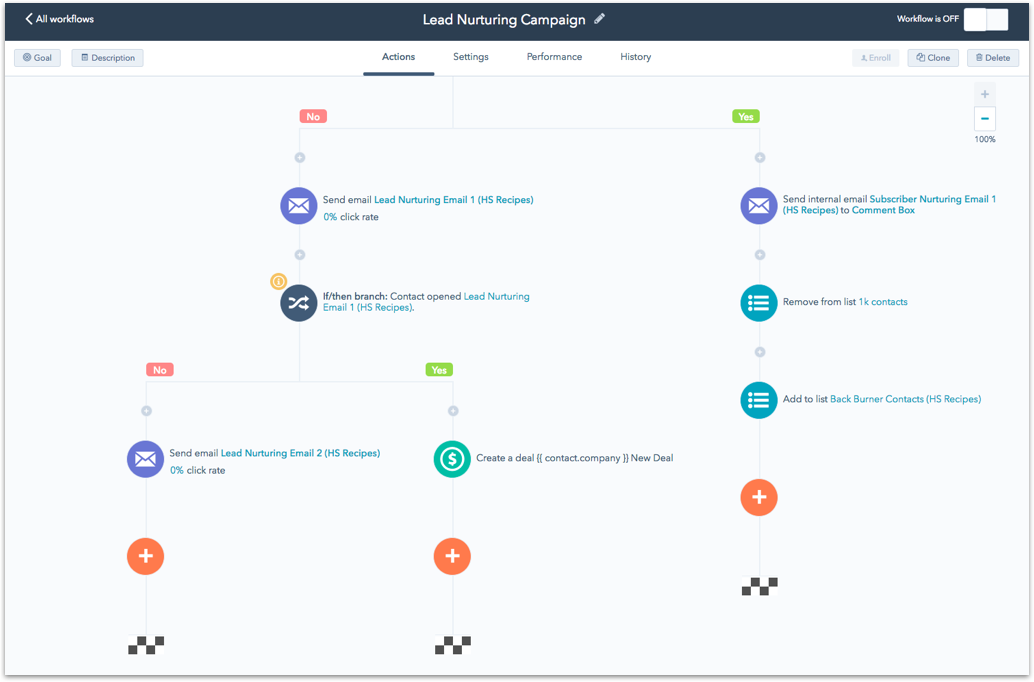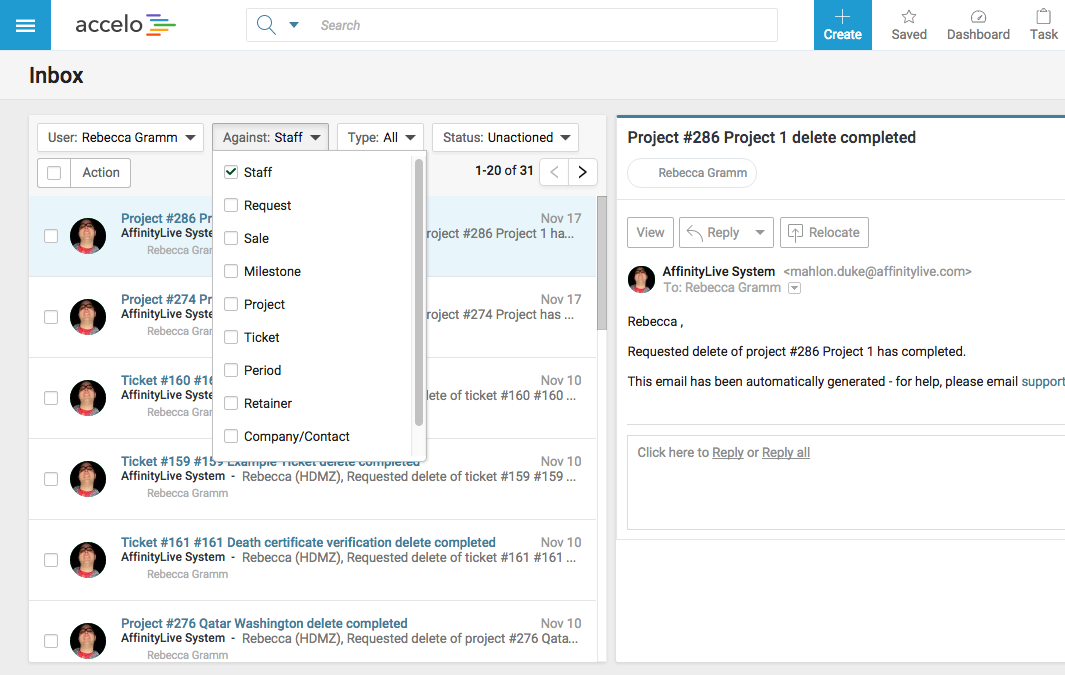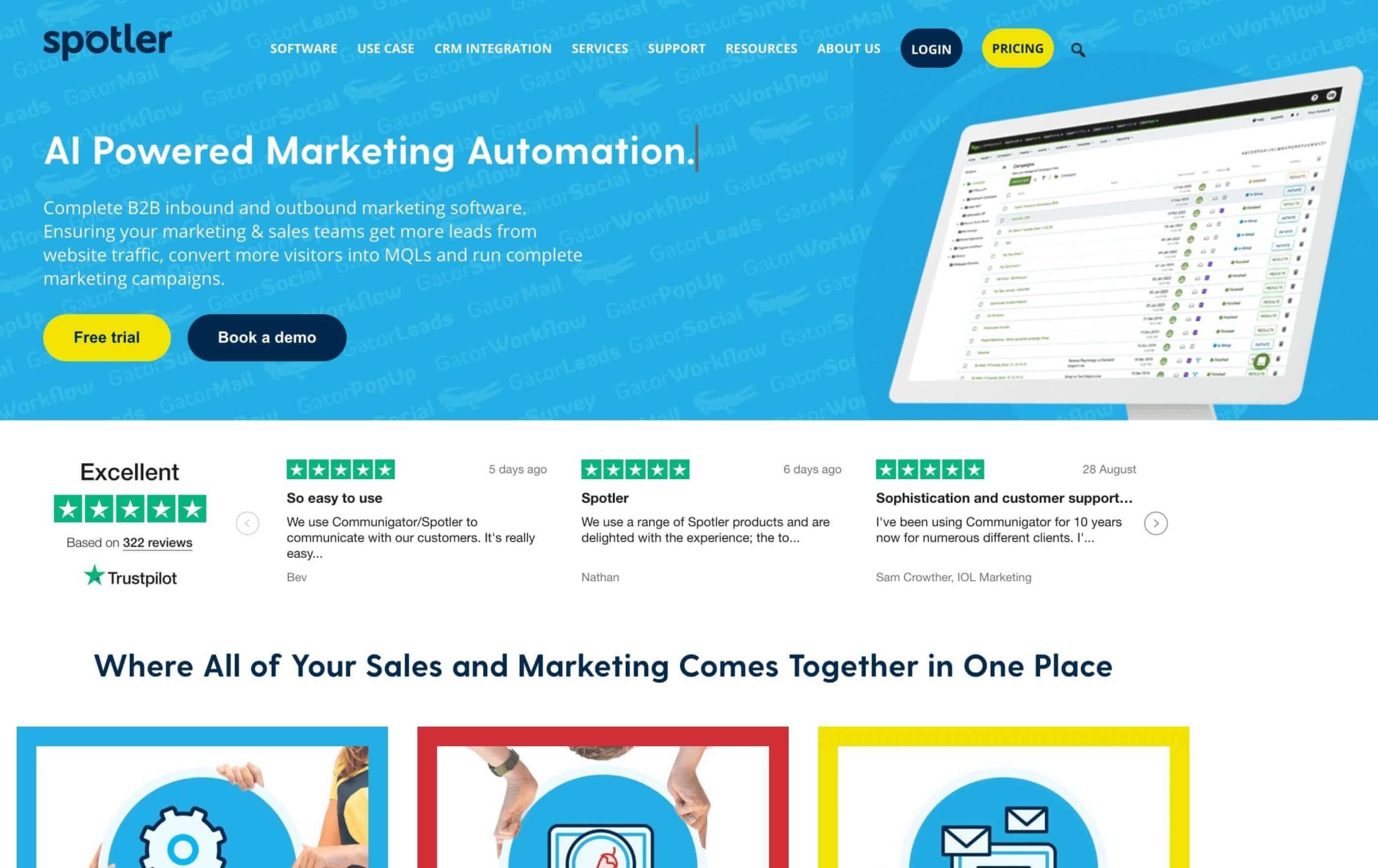B2B sales cycles can be long. To make it worse, in more cases than not we see sales and marketing teams that aren’t fully aligned around their roles and responsibilities. The lack of alignment means that sales cycles only get longer and funnel starts to leak. While lead nurturing isn’t a universal panacea, it should play a core part of your sales and marketing strategy and ensure that your team is aligned and understands the role they play in acquiring new customers.
More generally the idea behind lead nurturing is that you’re developing a healthy working relationship with potential prospects, turning them into long-term business partners. Most businesses can simply look on the internet or speak with industry contacts in order to discover other companies that they can work with, so there’s a limited chance that you will be found organically without a B2B lead nurturing strategy.
So in this article, we’re going to unpack the details of lead nurturing, how it affects your business and also describe a couple of lead nurturing strategies to help you improve your sales this year.
Section 1:
What is B2B lead nurturing?
Lead nurturing is the process of growing a relationship with your B2B clients. This is achieved by defining an ideal customer profile and personas and providing information to them that is relevant to the sales process. Strategies generally focus on creating a coherent journey that your customer can understand, while also focusing on marketing efforts that help to inform your potential customers of the options they have and eventually lead them through to a sale.
The way you nurture leads can depend on what platforms and channels you have available to you. For instance, you can take advantage of resources like email lists of companies that are in your target industries, or you can utilise social media channels like LinkedIn which are tailored for businesses. However, it’s important to understand that the very first lead nurturing email you send is not a sales pitch that lists a bunch of products and services that you have available. Instead, it’s about breaking the ice and developing a personalised experience for your potential prospects and providing them with valuable and useful information.
By creating these solid relationships through commitment and trust, you can expect to see repeat business and you’ll also watch your business grow through word of mouth in the industries that your business serve.
Article continues below.
Section 2:
Before you start developing a B2B lead nurturing strategy
There are a couple of important things to get out of the way before you start developing your B2B lead nurturing strategies. In no particular order, here are a couple of initial goals to think about before you start sending out emails and connecting with prospects.
Make sure you define what you consider a qualified lead.
A qualified lead is a prospect that is already being tracked by your marketing team and tools, usually because of past interactions that have triggered some kind of response. Qualified leads are essential leads that have already expressed interest in buying, but they need to fit certain criteria before they can be considered qualified. For example, they might fit your buyer persona, they might be in a geographic location that allows for a partnership, or they might have an employee count that is suitable for the services or products that you offer.
Ensure you have a deep understanding of your target clients.
Without a good understanding of your ideal clients, it can be difficult to target the right audiences. This is something that should have been established during the early stages of your business but it can often be lost as you expand your audience and search for more leads. Instead of trying to reach out to fringe companies that only have slight relevancy to your products or services, establish an ideal client persona or profile and stick with it as accurately as possible.
Understand where your leads stand in your sales funnel.
The sales process should be viewed as a literal funnel where marketing awareness and engagement sit at the wider end and actual sales opportunities and client relationships sit at the thinner end. A common funnel would start with brand awareness and engagement, then move on to lead generation and qualification before evaluating offers and negotiating deals. If you don’t think of your sales process as a funnel, then it can be difficult to analyze where your lead nurturing strategy stands.
Article continues below.
Audit your existing content to see what can be repurposed.
You may already have content that is perfectly viable for use in a lead nurturing strategy. For example, infographics that you have commissioned to promote your business could be reused when offering statistical information about your products to potential prospects, and you can repurpose your blog articles and compile them into case studies that showcase what your products and services are capable of. You can also repurpose any of your existing content into a downloadable version.
Start small if you’re new to lead nurturing.
No matter what size your business is, lead nurturing needs to start small and grow over time. Trying to interact with too many prospects at one time could result in a diminished personalised experience which could be detrimental to your strategy.
Consider marketing automation software when possible.
A good way to increase the number of leads you nurture, it’s important to think of the processes that you can automate in your sales cycle. Lead nurturing is incredibly labour intensive especially if it’s done by hand, which is why many companies use automation tools that can track lead engagements and drip-feed content to your prospects at opportune times.
In short, gathering information about your prospects and defining leads should take precedence before you execute any kind of lead nurturing strategy. If your business isn’t well-informed about your customers, then it can be particularly difficult to nurture leads and you may find that you can easily overwhelm yourself with too many points of contact. Automation software can help you handle your lead nurturing, but you should be careful not to lose the personalised touch that your clients value.
Section 3:
Building a B2B lead nurturing strategy
To build an effective B2B lead nurturing strategy, it’s important to look at the most popular lead generation channels in order to understand where you should be targeting your resources and focusing your efforts.
Email is one of the most popular lead nurturing strategy channels because it’s proven to be a consistent strategy time and time again. It’s also a channel that can be automated with the right software, but automation can often remove the personalisation that is valued when nurturing leads.
Social Networks
Social networks like Facebook and Twitter are commonly used in general lead nurturing strategies for products and services across all industries, but there are also social networks that are better for B2B lead nurturing such as LinkedIn. By optimising your social profiles and keeping your details on your active social platforms consistent, you can build an online brand identity that helps to give your business a voice.
Article continues below.
Content Marketing
Be it informative content on your business’s blog or through content like white papers, ebooks, press releases and webinars, you can create a strong content marketing strategy to help nurture B2B leads as long as you leverage your resources. Much of the content you create for the purpose of marketing can even be repurposed depending on your needs. For instance, webinars and press releases can be manually sent through email automation services and statistics can be shared on social media platforms to help prospects understand what it is you offer. Most of the times, companiesfall into thinkingthat lead nurturing requires new content creation efforts.But in reality, it is quite the contrary and you shouldfirstfocus on repurposing what your company alreadyhas and that has worked in the past and then start looking at expanding the content offer.
Remarketing
Remarketing is a strategy used to connect with website visitors that did not make a purchase or contact you. Remarketing can help you nurture leads through a prospect’s past interest in your services. It’s essentially a way to rekindle their interest in your products and services and is often used as an umbrella term for marketing to a single prospect multiple times through different channels. Here’s a bit more information about the different types of remarketing strategies and how to use content to support the outcome of it.
Section 4:
Automating B2B lead nurturing activities
There’s a plethora of software out there to help you automate B2B lead nurturing.
HubSpot

Hubspot is a general purpose marketing, sales and service software that aims to help your business grow. The marketing hub helps you develop drip campaigns and also track customer interactions with your brand in order to help you define qualified leads and follow up. Each lead is given the personal attention they need by using systems like live chat and chatbots to engage visitors and help connect them with the right representatives in your team.
Accelo

Accelo is an operations automation system for service businesses. It’s a cloud-based tool that manages client work on a single platform to help you analyze and understand your business with less stress. Their customer relationships management features allow you to nurture B2B leads with the help of automation tools that build professional relationships instead of simply offering a service with little context.
Spotler

Spotler is a marketing automation platform built for lead generation. There’s an entire marketing automation suite available which helps to identify, nurture and deliver leads. Spotler accomplishes this by managing all of your marketing needs in a single platform and creating responsive marketing campaigns that help to connect your prospects with the right content at the right time.
NurtureHQ

NurtureHQ is a marketing automation application designed for B2B lead nurturing and delivery. It supports multiple channels such as nurturing on-site engagement and personalised trigger-based customer messages and does so with highly customizable options that allow you to add human elements to your marketing.
Section 5:
Using lead scoring to nurture better leads
Not every lead is equal, which is why it’s important to rank prospects against a scale that helps you determine the value of each of your leads and which ones are worth focusing on instead of trying to overwhelm your business with too many leads to keep up with.
Article continues below.
What is Lead Scoring?
Lead scoring focuses on assigning “points” to each lead that your business generates. Multiple attributes are taken into consideration such as the information you’ve acquired and the information that they’ve offered to you. The process is designed to help you determine which of your leads is best suited for the services you offer so that you know which leads are worth nurturing and pouring your resources into.
Using Lead Scoring
Every business uses a different methodology when approaching lead scoring. Some companies even utilise multiple lead scores and many marketing platforms support the use of several lead-scoring systems to give you more flexibility for different sets of contacts and groups of B2B prospects.
There are different methods to calculate lead scores such as picking customer attributes that are important to you such as their geographical location or budget, but it’s also possible to use automated tools to help you determine which leads you should focus on. Once you’ve determined the leads that interest you, you can focus on nurturing leads that have a higher chance to convert into sales.
Section 6:
Measuring your lead nurturing activities
B2B lead nurturing can be a difficult process to measure but there are a couple of key metrics that can be used to quantify your success. In most cases, you’ll be relying on key performance indicators, often shortened to KPIs. Here are a few common KPIs that can help you determine the success of your lead nurturing strategies.
Separating leads from nurture-focused activities
Nurture leads should be separated in your overall lead generation campaign. This will help you understand how effective your lead nurturing leads and automation services are compared to your marketing as a whole.
Marketing qualified vs sales qualified leads
One of the best metrics to measure is comparing marketing qualified lead and sales qualified leads. Marketing qualified often means that you’ve nurtured a lead with a company that has expressed interest in partnering with your business but has not explicitly purchased a product or subscribed to a service, whereas a sales qualified lead assumes that they are already engaging with a member of your sales team.
Unsubscribe rates
Unsubscribe rates will often let you know if the frequency of your emails and messages are too much for your prospects. But carefully tracking this metric, you can optimise your lead nurturing strategies with your automation systems.
There are many other key performance indicators that you can track, but these three should give you a good indication of where you can begin.
To conclude, lead nurturing can often be mistaken for lead generation, but as long as you remember that lead nurturing focuses on delicately balancing your drip marketing and contact to slowly build trust with your B2B customers, it can change the way you perceive your sales funnel and create a positive impact on your sales targets and help you successfully grow your business.




